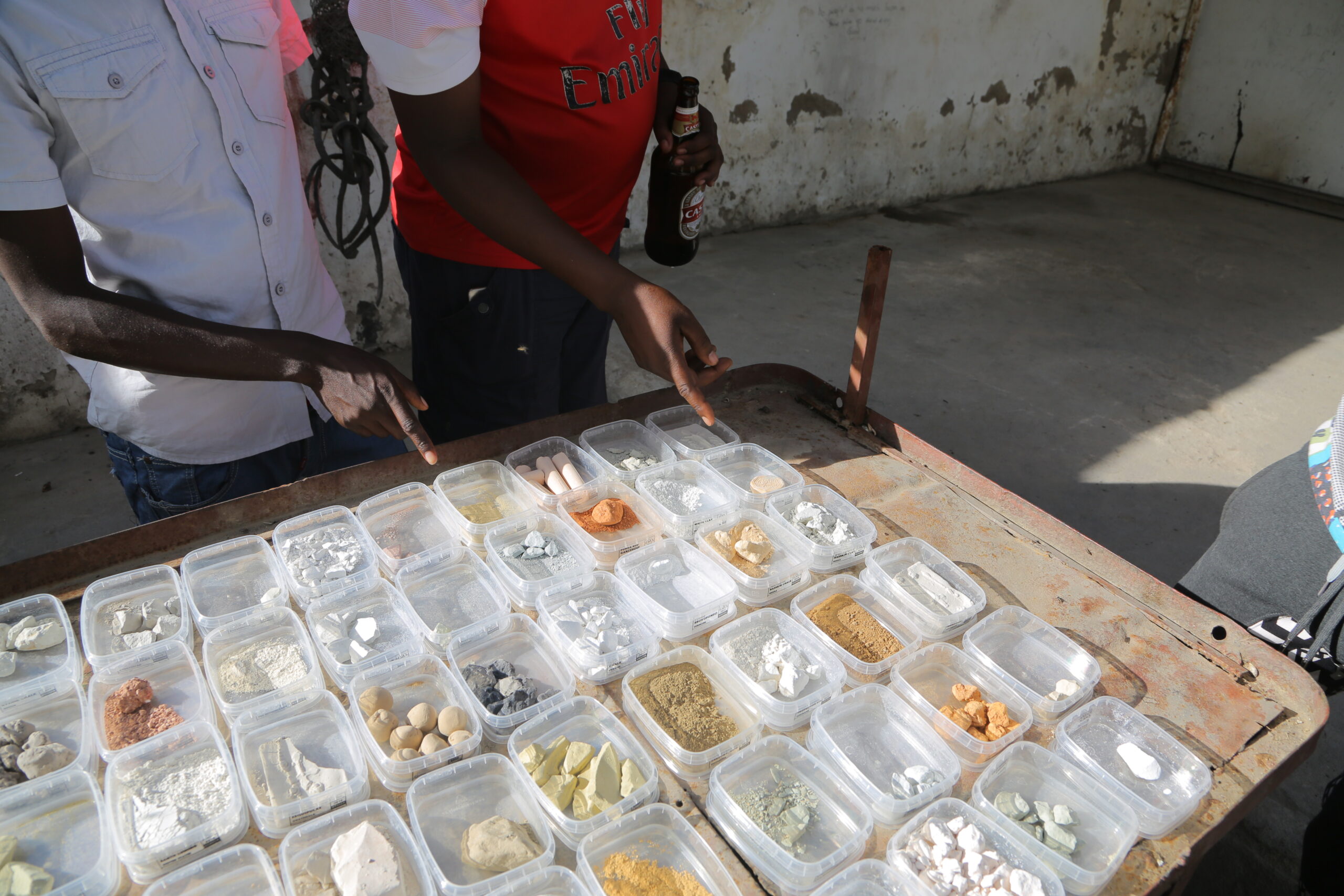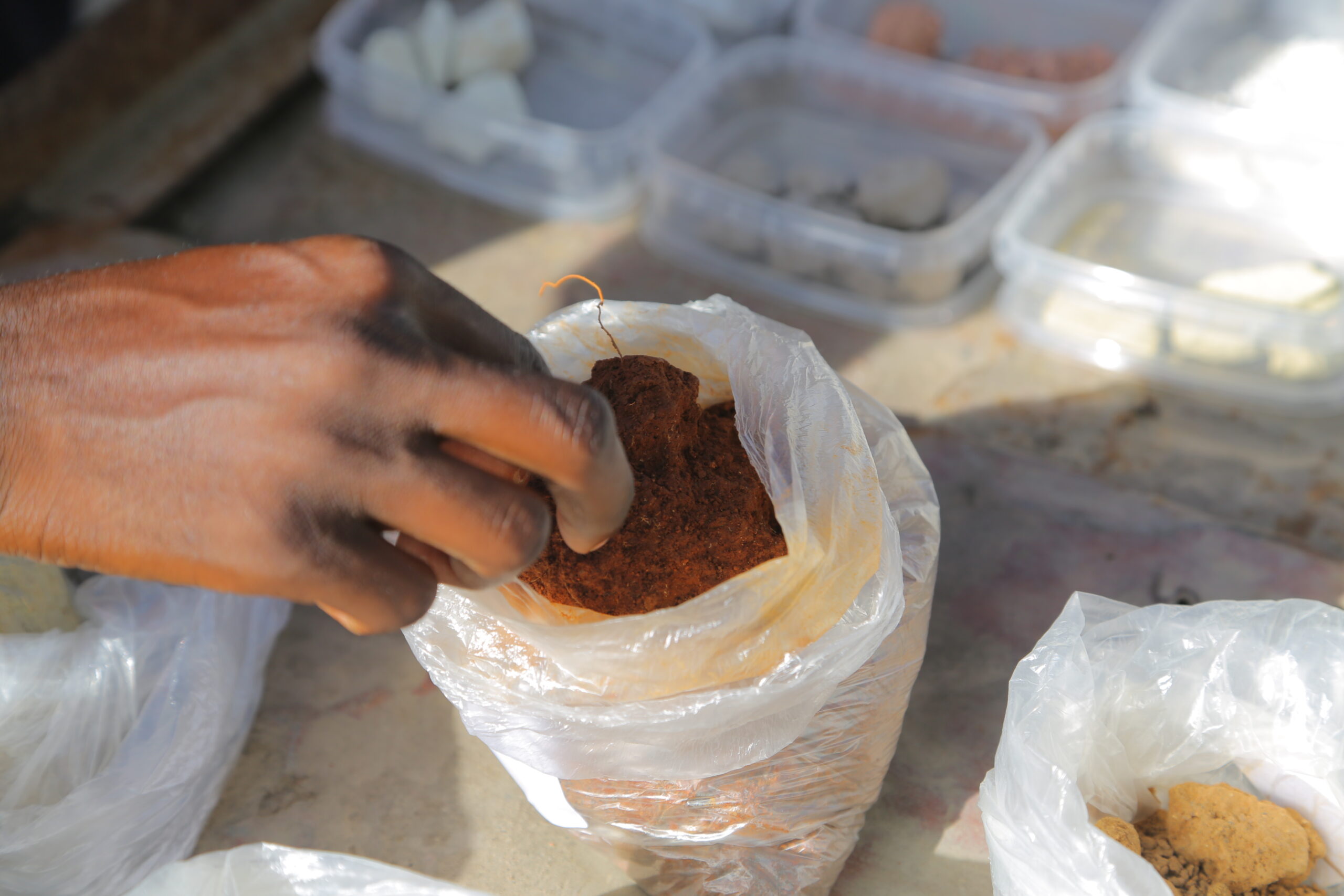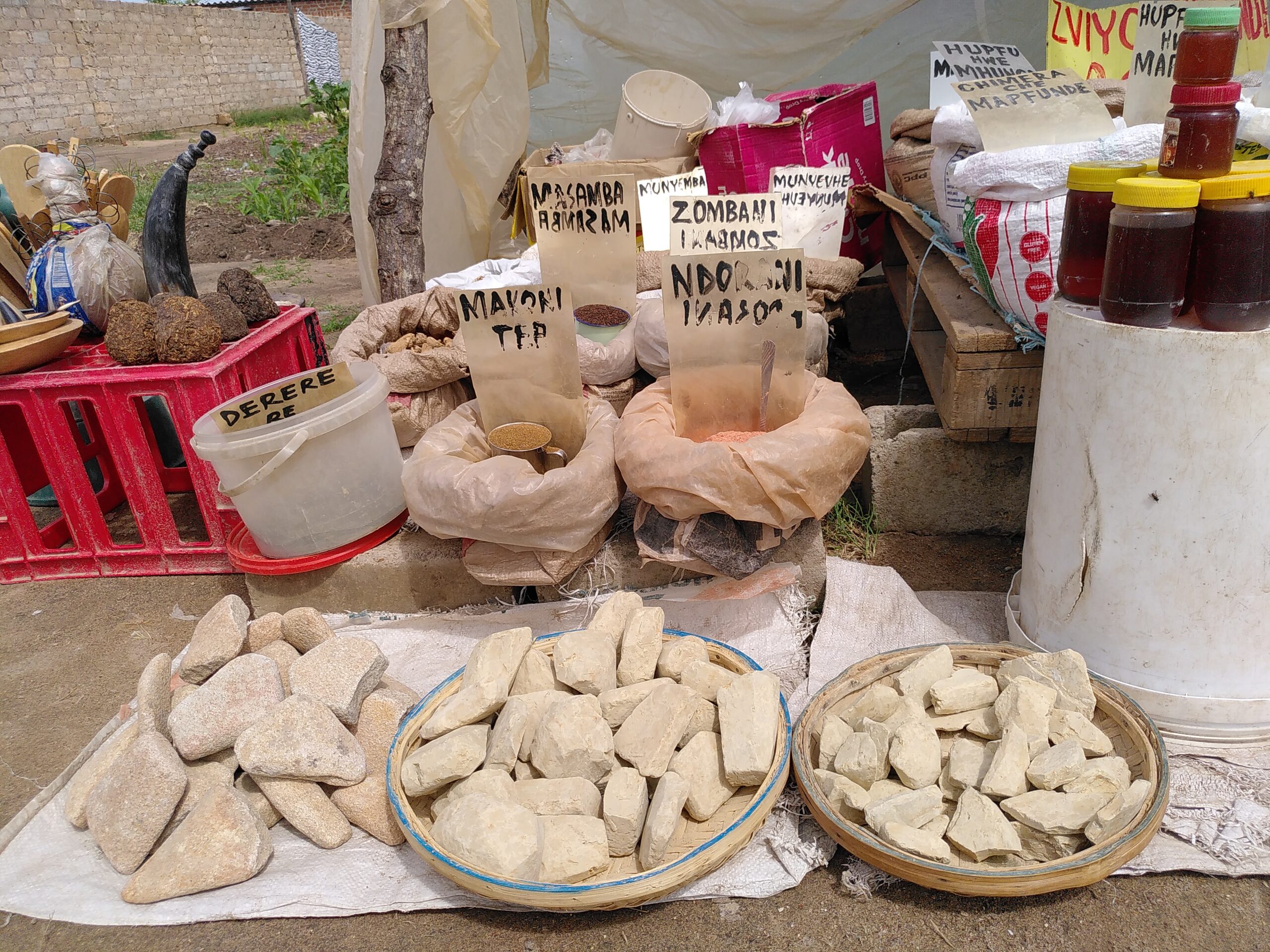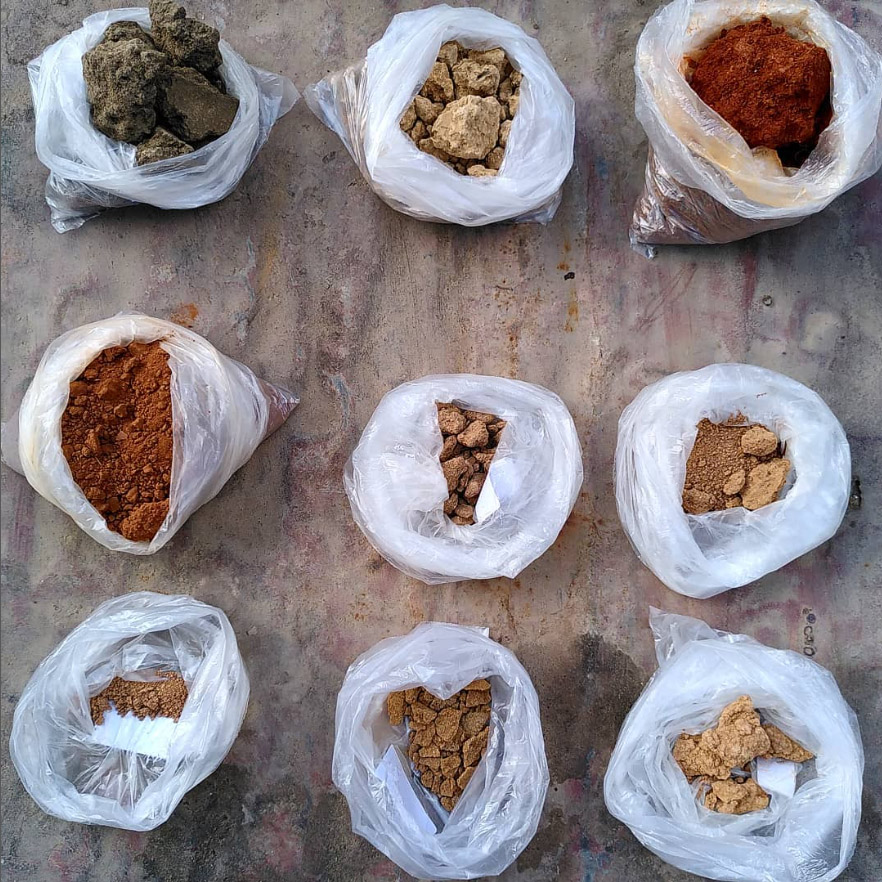Research work. Muchenje.
Zimbabwean termite earth known as Muchenje. It comes from termite mounds and trees. People say that this earth is sweet, compared to the earth outside of the mounds. Though I didn’t experience this sweetness myself. It has clay, sand, probably limestone, a bit of top soil, and little rocks in it. Apart of eating the earth is used for making bricks for construction.

Research of the Museum of Edible Earth was taking place within the Animal Farm Artist Residency. By creating a space that offers various types of exchanges through international activities and events, the Animal Farm Art Residency in Zimbabwe facilitates a series of developments aimed to foster creative practice connected with contemporary peers all around the world. It is a collaborative resolute to the cultural enhancement of the rural community. Inspired and influenced by the power of creativity, the residency programme endeavors to provide a stage for growth and development.

Muchenje is a clayish sandy earth, moulded by the activities of hodotermes termites. It was obtained in 2021 during the Animal Farm Art Residency and Dzimbanhete Arts & Culture Interactions in collaboration with a Zimbabwean artist Kundai Nathan. Hodotermes termites create and damp conical mounds out of earth reach with clay. Hodotermes tend to gather clay particles for mound construction in Savannas, building the conical mounds on top of soil. They cement the soil particles with salivary secretions and faecal excrements. People chew muchenje as a soft brownish powder or as pieces of hard biscuits. When chewed it creates the colour of chocolate in the mouth.

Affinity with muchenje varies from person to person and can be addictive at times. It is mostly favoured by girls and pregnant women and. Some animals such as elephants enjoy eating Muchenje. The quality of this product varies from area to area. It has a countrywide distribution in Zimbabwe and its availability is ubiquitous. It is also highly affordable. Muchenje is known for its medicinal and therapeutic qualities. It is believed to have been the cure to ues, colds as well as stomach ailments. It is also said to be rich in elements such as iron, potassium and calcium.
More information: ‘Muchenje’, by Kundai Nathan, 2021

